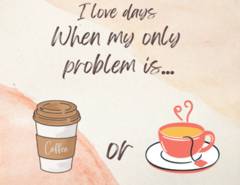By Cassandra Maya
As another year of COVID holidays approaches, I find myself nostalgic. When I was in high school, we would crowd the outside of the local strip mall and take our weeks’ worth of change to buy the latest food craze – frozen yogurt. Now you’ll probably laugh when I tell you just how popular frozen yogurt was, but it was great. From the different combinations of candy toppings, the colorful spoons, and especially the water dispenser with the floating flavorless strawberries in it (pinkies up), it was the epitome of suburban teenage individuality all wrapped up in a 12 ounce paper cup. Now, self-service food establishments are endangered and some already extinct (RIP all-you-can-eat salad). In fact, the start of the pandemic affected numerous parts of our daily lives, including the way we interact with food.
Grocery shopping
Curbside pickup and grocery delivery were more popular in areas with rapidly increasing cases and quickly became imperative for older adults. In-person grocery shopping was no longer just “a quick run to the store.” In San Diego (my home at the time), hour-long lines outside Trader Joe’s replaced the lengthy queues of the Gaslamp Quarter clubs. People began to see in-person grocery shopping as a valuable social activity, since other stores and establishments were closed [1, 2]. Supply chain issues and panic buying caused quantity restrictions and reduced product availability, and were important determinants of what people were buying. For example, dry goods were popular purchases during the start of the pandemic, but if only the most expensive brands were left on the shelves, consumers might have to cut their budget on other products to afford them. Overall, people also purchased more caloric foods [3, 4].
Dietary patterns
Stay-at-home orders affected what and how much we were eating. For some adolescents and young adults, staying at home resulted in higher consumption of fruits, vegetables, and legumes and a dramatic decrease in fast food intake likely due to more home cooked meals [5]. Some university students noted taking a more passive role in their food choices because they returned home [6]. There was an overall increase in the consumption of sweets, cakes (I’m looking at you, banana bread bakers), and coffee among university students [7].
Despite favorable consumption of fruits and vegetables, boredom and emotional/stress eating led to increased snacking [5, 6]. Notably, irregular eating patterns caused by COVID-related emotional distress affected adults all over the world. Increased emotional eating (in this case as a response to fear, stress, and anxiety) and binge eating (consuming large amounts of food in a short amount of time) was documented in various populations, and particularly affected those more susceptible to disordered eating [8, 9, 10, 11].

Matilda Wormwood via Pexels
Alcohol consumption
In the US, stressed individuals consumed more alcohol, more often during lockdown. Stress, more access to alcohol, and boredom were the primary reasons listed for increased drinking. Women had a higher increase in alcohol consumption than men. Similar trends were observed in Poland, England, and Australia [12, 13]. In university students, increased alcohol consumption was associated with weight gain during lockdown [7].
Fraud and quackery
Unfortunately, there will always be those who want to take advantage of people’s heightened emotions. From March 2020 to July 2020, the FDA issued 98 warning letters focused on COVID-19-related “treatments.” Forty were herbal treatments, twenty-two were mineral or mineral compound products, and three were vitamins. People were marketing and selling blessed waters, colloidal silver lozenges, and detoxifying honeys designed “to remove waste from internal and external cells” among other gimmicks [14]. Remember to be cautious when purchasing treatments that are not FDA approved.
If you or someone you know needs help accessing food, please visit the following resources or contact your local government:
(US) https://www.fns.usda.gov/disaster/pandemic/covid-19/resources-individuals-families
(UK) https://www.trusselltrust.org/coronavirus-food-banks/emergency-support/
(DK) https://foedevarebanken.dk/
References
- Grashuis, J., Skevas, T., & Segovia, M. S. (2020). Grocery shopping preferences during the COVID-19 pandemic. Sustainability, 12(13), 5369.
- Palmer, F., Jung, S. E., Shahan, M. K., & Ellis, A. (2021). P66 Understanding How the COVID-19 Pandemic Influenced Older Adults’ Grocery Shopping Habits. Journal of Nutrition Education and Behavior, 53(7), S54-S55.
- Martin-Neuninger, R., & Ruby, M. B. (2020). What does food retail research tell us about the implications of Coronavirus (COVID-19) for grocery purchasing habits?. Frontiers in Psychology, 11, 1448.
- O’Connell, M., Smith, K., & Stroud, R. (2021). The dietary impact of the COVID-19 pandemic(No. W21/18). IFS Working Paper.
- Ruiz-Roso, M. B., de Carvalho Padilha, P., Mantilla-Escalante, D. C., Ulloa, N., Brun, P., Acevedo-Correa, D., Arantes Ferreira Peres, W., et al. (2020). Covid-19 confinement and changes of adolescent’s dietary trends in Italy, Spain, Chile, Colombia and Brazil. Nutrients, 12(6), 1807.
- Powell, P. K., Lawler, S., Durham, J., & Cullerton, K. (2021). The food choices of US university students during COVID-19. Appetite, 161, 105130.
- Palmer, K., Bschaden, A., & Stroebele-Benschop, N. (2021). Changes in lifestyle, diet, and body weight during the first COVID 19 ‘lockdown’in a student sample. Appetite, 167, 105638.
- Cecchetto, C., Aiello, M., Gentili, C., Ionta, S., & Osimo, S. A. (2021). Increased emotional eating during COVID-19 associated with lockdown, psychological and social distress. Appetite, 160, 105122.
- Fernández-Aranda, F., Casas, M., Claes, L., Bryan, D. C., Favaro, A., Granero, R., Gudiol, C., Jiménez-Murcia, S., Karwautz, A., Le Grange, D., Menchón, J. M., Tchanturia, K., & Treasure, J. (2020). COVID-19 and implications for eating disorders. European eating disorders review: the journal of the Eating Disorders Association, 28(3), 239–245.
- Bemanian, M., Mæland, S., Blomhoff, R., Rabben, Å. K., Arnesen, E. K., Skogen, J. C., & Fadnes, L. T. (2021). Emotional eating in relation to worries and psychological distress amid the COVID-19 pandemic: a population-based survey on adults in Norway. International Journal of Environmental Research and Public Health, 18(1), 130.
- McAtamney, K., Mantzios, M., Egan, H., & Wallis, D. J. (2021). Emotional eating during COVID-19 in the United Kingdom: Exploring the roles of alexithymia and emotion dysregulation. Appetite, 161, 105120.
- Grossman, E. R., Benjamin-Neelon, S. E., & Sonnenschein, S. (2020). Alcohol consumption during the covid-19 pandemic: a cross-sectional survey of us adults. International journal of environmental research and public health, 17(24), 9189.
- Barbosa, C., Cowell, A. J., & Dowd, W. N. (2021). Alcohol consumption in response to the COVID-19 pandemic in the United States. Journal of Addiction Medicine, 15(4), 341.
- Bramstedt, K. A. (2021). Unicorn Poo and Blessed Waters: COVID-19 Quackery and FDA Warning Letters. Therapeutic Innovation & Regulatory Science, 55(1), 239-244.
- Featured image by Anna Shvets via Pexels

Cassandra Maya | Linkedin
SMF Blog Writer
Cassandra earned a B.S. in Food Science and Technology from Cal Poly Pomona and a M.S. in Nutritional Science from San Diego State University. As a Marie Skłodowska-Curie PhD fellow at the University of Copenhagen, Cassandra researches the nutrition and acceptability of alternative proteins, but is especially a fan of edible insects. In the future, Cassandra hopes to teach and foster kittens.






Leave a Reply